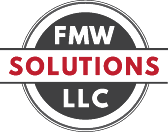Top Five Railroad Safety Items To Consider In The Era of Part 243
By Kevin Sweat, Director of Safety and Compliance
Training has always been a key element to rail operations– especially with on-the-job training. One person can make or break your OJT – and training cultures can vary widely. Even in smaller operations, a designated safety and training personnel may have difficulty with new hires or contractors in the field.
That’s where 49 CFR 243 comes in. Part 243 provides a published standard for railroads and rail industry contractors to develop and submit a training program to the FRA for approval and provides the framework for periodic reviews and oversight. Gone are the days of vague instructions, informal processes, or worse yet – outdated or non-existent training manuals.
Part 243 doesn’t just affect just Class I carriers, but short lines and regulated tourist or heritage railroads have to develop and maintain their own 243 programs, too. In addition, if you’re a contractor or company working on railroad equipment or in a railroad environment – whether as part of a track maintenance company, an industrial railroad, or even the owner of or mechanic for a historic railroad passenger car operating on the general system, it’s time for you to build and maintain your own 243 programs, too.
For anyone looking to advance and protect their organization or their skills in the industry, 243 offers a road map to ensure that everyone you’re working with has the same basic set of tools and information. It means the person left or right of you has not only a wealth of their own personal knowledge and experience but that you’re working from the same foundational safety principles. And in the event that something terrible does happen – you have an excellent way to demonstrate a level of conscientiousness in safety and training.
The implications of the compliance are almost universal. Here are the top five things you should consider – even if your operation is exempt from 243.
1.) INSURANCE. Insurance companies for industries often require the companies to provide "railroad training" from a third party or they offer discounted insurance rates for those who do. 243 can provide an opportunity to show insurance companies that your people consistently receive proper training that meets or exceeds industry standards.
2.) STANDARDIZATION. Although each company is different, it has been proven time and time again, that the comparison of processes and benchmarking within any industry results in a safer work environment and increased production in the long term. Following "best practice" guidelines and meeting or exceeding industry standards have proven to decrease culpability in the event of an accident. 243 provides railroad-related industries an opportunity to align their training systems with one another and strengthen the employee workforce as a whole.
3.) READINESS AND COMPLIANCE (or lack thereof) usually goes unnoticed until something goes wrong. While fines are a method of enforcement the FRA uses to ensure compliance, the scarier thing for most companies would be the potential legal liability if they are found to be non-compliant with regulations when an accident occurs.
4.) CONSISTENCY. Railroads or contractors which currently have employees and certain federal programs in place, likely meet some of the 243 requirements already. It seems like a step in the wrong direction to introduce new or opposing training materials into an already successful environment. Rule vs. training vs. actual practice inconsistencies in any environment cause confusion and apathy amongst employees. If they know the rule says X and the training said X or Y and the actual practice is Z, then employees cannot seriously be expected to understand or follow the rules. If an outside training organization trains your employees, you’ll then have to invest time and money to fix the one-size-fits-all approach.
5.) PEOPLE. While 243 does require more administrative heft on behalf of everyone, it ultimately means a chance to continually improve your own processes, and document safe and efficient methods and practices that protect your most valuable resource: your people!
At FMW Solutions, we recognize the need for on-the-ground guidance and evaluation. Even in a digital world, training, safety and compliance are not something you can administer or monitor remotely or with a one-size-fits-all production. As a qualified FRA inspector, FMW Solutions can highlight opportunities for improvement and provide valuable assistance before an FRA audit occurs. Regardless of the size and complexity of your operations, we’re committed to doing so with open dialogue, cooperation, and a culture of safety and professionalism. For more information on training, program administration, auditing, or operations assistance, contact FMW Solutions.
Director of Safety and Compliance Kevin Sweat has over 15 years of experience in the railroad industry, ranging from tourist railroads, short lines, Class Is, and commuter railroads and holds certifications from the FRA in Accident Investigation and Positive Train Control. He most recently served for six years as an FRA Operating Practices Inspector for the Florida Department of Transportation.

